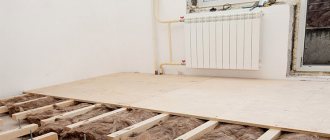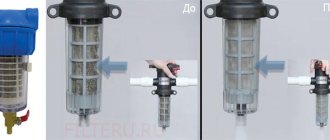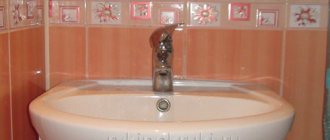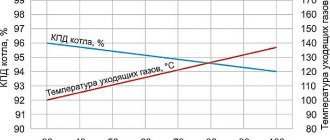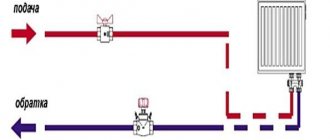What it is?
The term "hot water" is used often. According to SanPiN 2.1.4.2496-09, the standard is a temperature range of 60-75°. At the same time, water is considered cold if its temperature is below 40°.
These rules guide technicians and specialists, but it will also be useful for ordinary users to know the current standards.
The standards are drawn up in such a way as to ensure the basic requirements:
- destruction of harmful bacteria living in water;
- preventing burns.
Most types of microflora die already at 55°, but this requires at least 5-6 hours. If the water is heated to a minimum (60°), bacteria can withstand no more than 22 minutes, and at 66° they are destroyed in just 2 minutes.
Too hot water is dangerous even for adults , not to mention the elderly, sick people or children. Therefore, the upper limit is calculated so that the consequences of a burn are minimal.
At night (0.00-5.00 hours) a deviation from the standard limits of 5° is allowed. During the day, the permissible deviation limit is 3°.
Formula and its decoding
If hot water is supplied from the mains (this option is also called an open circuit), the calculation formula will be as follows: amount of hot water used (according to the meter) × domestic hot water tariff.
In MKD, another type of hot water preparation is often found . The house receives ordinary cold water, which is heated in a boiler installed in the basement (closed hot water supply circuit).
In such cases, another formula is used: the amount of hot water used (according to the meter) × cold water tariff plus the amount of thermal energy × heating tariff.
The second option for supplying hot water is becoming the main one, since it provides significant savings and reduces the cost of services.
Possible malfunctions in the DHW complex
Due to the similarity of typical systems of multi-story buildings, the problems that arise in them are also standard, with rare exceptions. Some of them can be fixed by residents themselves without a long wait for a technician from a service company. Key points on this list
Valves leaking
Occurs on shut-off valves along the line of the rod. Appears due to damage and wear of seals. It can be eliminated by turning the thumb knob all the way. In this case, the thread will press the oil seal as much as possible, eliminating the leak.
Crane noise
The cause of the malfunction lies in the mixer itself, or more precisely in the internal element - the faucet. The deformed gasket vibrates and blocks the flow, creating rhythmic water hammer. Since hot water enters the house under high pressure, this problem is usually more pronounced on the red tap. The malfunction can be eliminated by removing the valve axle and replacing the seal on it. As an option, you can install a new ceramic element that does not have this drawback.
Cold heated towel rail
The problem may arise due to the accumulation of air in the horizontal jumper on the DHW riser. You can blow out the plug by contacting your neighbors on the top floor. If it is not possible to come to an agreement with them, the fault is eliminated from the basement. To do this, you need to shut off your riser in the basement, and then open all the hot water taps in the apartment. The air will escape through them, after which the supply can be started.
Physical properties
The physical parameters of water depend on existing conditions . They are related to each other - a change in one value leads to a change in other values.
For convenience, we will compile a table of the physical parameters of hot water at standard temperatures (in the range from 60 to 75°):
| Options | Values at 60° | Values at 75° |
| State of aggregation | Liquid | Liquid |
| Density, ρ | 983.2 kg/m3 | 974.8 kg/m3 |
| Thermal conductivity, λ | 0.659 W/(m deg) | 0.671 W/(m deg) |
| Dynamic viscosity, μ | 469.9 Pa s | 381.8 Pa s |
| Kinematic viscosity, ν | 0.478 m2/s | 0.398 m2/s |
| Thermal expansion coefficient, β | 5.11 deg-1 | 6 deg-1 |
| Specific heat capacity, Cp | 4182 kJ/(kg deg) | 4191 kJ/(kg deg) |
| Surface tension coefficient, σ | 662.2 N/m | 635.4 N/m |
| Thermal diffusivity (x×108), a | 16 m2/s | 16.5 m2/s |
| Prandtl number | 2,93 | 2,38 |
Analyzing the data from this table, you can notice different dynamics of many parameters. Some increase with increasing temperature, others decrease.
For operating organizations working with hot water, these parameters help solve operational issues and keep the lines in good condition. This article will tell you which water has more weight - hot or cold.
How to properly file a claim
There is no single standard for filing a claim for the supply of hot water with a temperature below the established standards. When drawing up a complaint, they are guided by generally accepted standards for writing statements.
The header of the appeal indicates the full name of the addressee, last name, first name, patronymic of the applicant, place of residence, status in relation to the occupied premises (owner, tenant), telephone number.
Request for recalculation or change in service tariffs
The text of the statement succinctly sets out the essence of the claims being made with reference to the relevant legislative norms. If the complaint concerns the low temperature coming from a hot water tap, they write exactly about this, indicating any deviations from standard indicators.
In the final part of the claim, they are asked to organize an authoritative commission to conduct an on-site inspection of the stated facts, draw up a report, eliminate existing violations, and recalculate utility bills for the required period.
Sample claim requesting recalculation of payments for hot water supply
What is its color, how is it displayed in plumbing?
Externally, hot water is no different from cold water . However, it is necessary to separate pipelines with different flows in drawings and diagrams to avoid confusion.
Pipelines with water according to GOST are indicated in green. This is a general marking that can be applied either as a solid color or using transverse rings located in conspicuous places.
On plumbing fixtures, control valves are painted differently . The usual designations are blue (cold) and red (hot water).
This is due to the psychological perception of temperature. Blue is the color of ice, and red is the color of hot metal, fire. Read about hot water pipes here. You can find out which side the hot water is on the mixer here.
Quality requirements
Hot water must comply with sanitary standards defined in GOST 2874-82 and SanPin 2.1.4.2496-09. The main requirement is to ensure temperature limits of 60-75°, where the minimum value is due to the need to comply with epidemiological safety standards, and the maximum allows to avoid severe burns.
One of the most common and dangerous infectious agents is legionella, which lives in water. DHW networks are a potential source of infection, so control of water temperature must be strict and constant.
In addition, the amount of foreign components - solid particles and suspended matter - is standardized. Their amount should not exceed 5 mg/m3. pH, the degree of acidity, is no less strictly regulated. According to the standards, the level should be between 6-9. The water should be clear and odorless.
This and this article will tell you about the temperature of hot water in the tap. You can find out how to measure your temperature here.
In MKD
DHW is supplied to the apartment building according to the usual sanitary and technical standards . There are no exceptions or special conditions.
All requirements are valid for any residential buildings. The main problem with DHW supply in apartment buildings is the simultaneous use of one riser by many subscribers.
The water has time to cool while it passes through a long open pipeline . For users who are connected to the end points of the riser, ensuring the standard water temperature becomes a serious task, which is solved by insulating pipelines and increasing the initial temperature to the permitted maximum. Read more here.
In public institutions
The quality of hot water in institutions is determined by general standards and is ensured by the same methods as in residential buildings.
There is no difference, since the end consumers are people in any case. The standards for temperature, composition and the presence of foreign elements must be fully observed.
Since DHW is supplied through the same lines (or using the same equipment), it is not difficult to obtain the expected result.
Water supply for a residential building
The water supply system of a residential building is one of the main life support systems that are necessary to create normal living conditions. Therefore, the development of the project and installation of hot water and cold water systems must be carried out in strict compliance with current standards and SNiP. For integration, it is important to ensure professional design of the system and competent selection of the water supply scheme for an apartment building. Installation must be carried out by highly qualified performers using high quality components and materials.
Connection diagrams
DHW supply is carried out in different ways , depending on the specifics of the premises, their purpose and design features. Let's look at the most common connection diagrams.
In the apartment
Hot water is supplied to the apartment through a common riser.
To connect a subscriber, it is necessary to make a horizontal outlet (bed) equipped with shut-off valves (usually a ball valve) with the necessary instruments and devices - a meter, a filter, a check valve, etc.
A horizontal pipeline is placed along the plumbing installation line; all sinks, toilets, and bathtubs are connected to it. As a rule, there is only one sunbed per apartment, although any options are possible.
Read about moving a hot water riser here, and about replacing it here.
In a private house
DHW supply to a private house can be done in two ways:
- Centralized water supply . A pipeline with hot water is installed in the house and shut-off valves are installed. Further wiring is carried out in the usual way - a sunbed is installed, to which all the necessary plumbing and household appliances are connected.
- Autonomous water supply . Here the source of hot water is a boiler or indirect heating boiler. They are connected to horizontal wiring, assembled according to the usual scheme.
Both options have their pros and cons. Today, the autonomous method of supplying hot water is beginning to prevail.
In the bath
DHW is heated in a bathhouse, as a rule, using its own heat exchanger. An exception may be old public baths, where hot water is still supplied through an open system.
To heat water, use a sauna stove, an indirect heating boiler or a gas heater. The choice depends on the size of the bathhouse, the needs of people and the type of available sources of thermal energy.
Read more here.
Heated towel rail
Heated towel rails are connected to the hot water riser only in houses with a combined bathroom.
The device is connected to the pipeline at two points (flow inlet and outlet) without interrupting its movement.
The passage of water is directly provided by a bypass, which is prohibited from being blocked or even equipped with shut-off valves.
Connecting a heated towel rail to a hot water riser ensures constant operation of the device, independence from seasonal heating shutdowns. However, the installation must be carried out correctly and without errors, otherwise the supply of hot water to other subscribers will be disrupted. You can find out more here.
Methods of obtaining and types of hot water supply
According to the method of production, DHW systems are divided into two types:
- open,
- closed.
Hot water supply for an apartment building comes in two versions:
- with single-pipe risers,
- with two-pipe risers.
The two-pipe system consists of two risers:
- server,
- circulation.
The heated water flows through the supply riser to the apartments, and through the circulation riser into the central main. Both pipelines are nearby. Heated towel rails are placed on the circulation riser in bathrooms - curved pipes that not only heat the rooms, but also compensate for temperature changes in the length of the pipe. The water in them will no longer be disassembled by consumers, but will be returned through the central pipeline back to the boiler room.
In a single-pipe scheme, each consumer has one riser - supply, and all circulation pipes are combined into one “idler”. It has no consumers, and the water through it returns to the main line.
Heated towel rails with this design:
- placed on the supply pipe,
- electric ones are installed,
- connect to the heating bed.
In the latter case, heated towel rails only operate during the heating season.
With any wiring scheme, the hot water supply system of an apartment building must be able to drain periodically occurring air pockets. With the top wiring, automatic relief valves are installed for such purposes; with the bottom, air can be removed through the top water intake valve.
Why is circulation needed?
If the hot water is stationary in the pipe, it will quickly cool down and no longer meet regulatory requirements.
Therefore, to ensure the required quality, water is circulated - it constantly moves in a circle, leaving the boiler, passing through the riser and returning back to be heated.
Dead-end DHW supply schemes are ineffective and are gradually disappearing, giving way to more advanced and economical options.
This article will tell you what circulation of hot water is; this article will tell you about recirculation.
conclusions
The open hot water system is an obsolete scheme, which is being widely abandoned not only because of legal requirements, but also because of its key disadvantages, especially the low quality of water in the system. Closed CTs are installed in new buildings, private houses, industrial enterprises and production facilities. When using modern and energy-efficient thermal equipment, in particular plate heat exchangers, a closed-type system is the most economical, convenient and easy-to-use tool for creating an optimal indoor microclimate and providing consumers with hot water. You can purchase heat exchangers at the best price and order their installation services at: specialists will offer profitable solutions and provide after-sales service for the purchased equipment.
What is GW admixture?
The addition of hot water occurs in faulty mixers or distribution units , where there is a simultaneous connection of hot water and hot water pipelines.
If the pressure of hot water exceeds that of cold water, the water begins to gradually squeeze out the cold flow and fill the cold water pipeline. The opposite situation also occurs, when hot water is replaced by cold water.
The only way to deal with these problems is to identify the problem unit and repair it or replace it with a better model. More details can be found here.
How does it appear on the receipt?
The usual “hot water” column in housing and communal services receipts is practically no longer found . Let's consider options for designating services in modern conditions.
Recording options and their decoding
The easiest way to decipher the line “DHW”, “amount of hot water” or similar designations. This refers to the volume of hot water used during the reporting period.
As a rule, this designation is used on open hot water supply systems, which are still in operation in some localities.
There is another designation option . The DHW meter reading (or standard value) is taken into account, but the cost is calculated as the sum of the cost of the amount of cold water determined by the meter and its heating.
The water is designated as “cold water for DHW”, or “DHW: coolant component”. Thermal energy is designated “DHW: component on TE (thermal energy)”. Read more here.
Heating
Heating hot water is the procedure of heating ordinary cold water to the standard value. It is produced in a boiler located directly in the basement of the MKD .
This method provides significant savings and reduces the cost of hot water. Read more here.
How to convert gcal to m3?
To heat 1 m3 of water, a certain amount of thermal energy is spent.
1 Gcal is the amount of heat required to heat 1000 tons of water. A ton is 1 m3. Therefore, to heat 1 m3 of water by 1 degree it takes 0.001 Gcal.
Based on this ratio, you can calculate the amount of heat required to heat a certain amount of water to a given temperature. Read more here.
Bottlings
Water supply bottlings are horizontal pipes running through the basement and connecting the risers with the elevator and water metering units. The filling diameter, depending on the material and volume of water consumers, ranges from 32 to 100 mm.
A water supply project for an apartment building must take into account not only the current condition of the pipelines, but also their inevitable overgrowth with sediment and rust after 20-25 years of operation. There are two dispensers in the hot water circulation system.
For internal hot water pipelines, SNiP 2.04.01-85 recommends the use of plastic pipes and fittings. Fittings are used from:
- polyethylene,
- polypropylene,
- polyvinyl chloride,
- metal-polymer,
- fiberglass,
- other plastic materials for water supply networks.
To avoid corrosion, the systems are made of galvanized pipes.
For all internal water supply networks of an apartment building, you can use:
- copper pipes,
- shaped parts,
- bronze pipes,
- with protective coating against rust,
- brass pipes.
With pipe diameters of more than 150 mm in open heat supply systems, black pipes can be used. Thermal insulation of these elements is mandatory for hidden wiring and in unheated rooms. You can use foamed polyethylene, it will make a so-called “fur coat”.
Where to go if there is no hot water supply?
As a rule, home owners enter into an agreement for the supply of hot water with a management company. Less often, contracts are concluded directly with resource suppliers.
The reasons for the lack of hot water supply can be different : from a serious accident on the line to planned repair work.
If there is no hot water for too long, you need to contact the organization with which the contract has been drawn up. All necessary information can also be obtained from the management company or from the management of the HOA.
You can find out where to complain if there is no hot water here, where to call - here.
What if the wrong water flows from the tap?
Let's consider common situations:
Cold instead of hot
Sometimes the water simply cools down in the pipes, and you just need to let it through a little so that the temperature rises to the standard level.
But a prolonged lack of hot water may be the result of a broken boiler. In such cases, the HOA or management company must be notified. Read more here.
Hot instead of cold
If hot water comes out of a cold tap, there are 2 possible reasons:
- the water supply is incorrectly connected (flexible hoses are mixed up);
- Hot water is mixed into a cold pipe.
In the first case, you need to swap the hoses. The second situation is somewhat more complicated - you need to identify the problematic faucet or plumbing fixture and repair (replace) it. Otherwise, you will have to put up with the inconveniences that arise.
Another possible reason is that the management company’s workers accidentally mixed up the pipelines during repairs and redirected the cold and hot flows. You need to find out from the neighbors above (below) if they have the same problem, and contact the Criminal Code. Read more in this article.
Dismantling sewerage in an apartment
Replacing an old sewer pipe with a new one has many nuances that must be taken into account in this process. Initially, it is necessary to determine the places in the pipe that are most vulnerable to deformation. You also need to disconnect all existing connections from the pipe and remove all debris. All this is needed to ensure more convenient work.
Then, near the riser, the tap is turned off, which supplies water to the apartment. If the replacement will take a long time, then it is best to completely disconnect the entire riser from the water supply. At the very last moment, it is necessary to carefully dismantle the cast iron sewer pipes. All this can be done using adjustable wrenches or other tools.
It is necessary to install a new pipe in a complete set with various adapters and couplings, since then it will not be possible to do it efficiently. All connections must be sealed with sealant to protect the riser from leaking.
Problems with DHW
Any problems with the hot water supply may mean either a malfunction of the apartment plumbing, or a breakdown of equipment on the line in the basement.
You need to know that scheduled hot water outages cannot take more than 8 hours a month or 4 hours in a row .
However, if there is an accident on the line, you will have to wait until it is fixed. Longer breaks are also possible here, since restoring the operation of the main line is a complex and time-consuming task.
You can find out about problems associated with weak hot water pressure here. This article will tell you how to recalculate hot water. You can find out more about hot water pumps here.
Breakdowns and malfunctions
Typical DHW malfunctions include:
equipment failure;- noise in the system operation;
- the temperature of heating devices is below normal;
- weak hot water pressure;
- temperature spread of the coolant across the floors of the house;
- leaks in connections;
- corrosion of pipelines and shut-off valves.
Noises, as a rule, are caused by vibration of incorrectly installed pumps, wear of electric motor bearings, loosening of pipelines, and failure of control valves.
A decrease in the temperature of heating devices is caused by air pockets in the devices themselves, misalignment of the elevator unit, blockages and violation of thermal insulation in heating risers.
Low water pressure in the absence of blockages is most often caused by malfunctions of the booster pumps. Timely maintenance increases the reliability of the heating system.
Resource saving
Saving hot water is possible in most cases . For example, when washing dishes or brushing your teeth, water goes down the drain aimlessly.
If you close it and use only a certain amount in a sink with a stopper, you can make significant savings. This also applies to other procedures - for example, you can take a bath less often, limiting yourself to a shower.
You will find the standard for hot water consumption in this material. Read about connecting a washing machine to the hot water supply here.
Cooler temperature
The cooler design has two water temperature sensors . One is adjusted to a temperature of 68-85°, and the second - to 90-98°. This value should be considered the operating maximum for most coolers.
It should be borne in mind that over time, device heaters somewhat reduce their capabilities, which is why the maximum temperature may decrease by several degrees.
Read more here.
Use
Today, many online publications promote the use of hot water as an effective means for removing toxins and cleansing the body.
It is claimed that hot water can remove excess fat , women can get rid of menstrual cramps, etc. The effectiveness of this technique has not yet been proven, as well as the possible harm from it.
Let's take a closer look at some aspects of this issue:
Can you drink from the tap?
Drinking tap water is not recommended . Especially if it's hot water. Some experts consider it technical, since it is heated in specialized equipment.
However, the preparation, purification and disinfection of tap water is carried out regardless of its further use. However, it is recommended to boil the water before drinking without drinking tap water. Details are in this article.
The benefits and harms of regular drinking
It is believed that hot water stimulates the functioning of all glands and systems of the body, tones the muscular system and stimulates metabolism. However, no one has yet provided indisputable evidence of these possibilities of hot water.
At the same time, uncontrolled consumption is harmful to the cardiovascular system, as this increases blood volume and pressure and increases the load on the heart. Therefore, careless adherence to fashion can cause significant harm.
People with problems of the cardiovascular system are advised to limit their consumption . Is it healthy to drink hot water? You can find out here.
When losing weight
Drinking hot water when losing weight is due to its ability to relieve spasms of the gastrointestinal tract and temporarily remove the feeling of hunger. The less often a person eats, the less likely he is to become overweight.
The technique is simple and does not require you to limit yourself to delicious foods. It’s just that eating becomes less frequent, which has a positive effect. Read more here.
With lemon
Many users know about the benefits of drinking a glass of hot water with a few drops of lemon in the morning on an empty stomach . There are also more radical methods that require drinking hot water with lemon before each meal.
Lemon is a source of vitamins necessary for humans. However, for people suffering from peptic ulcers, high acidity of the stomach, or other gastrointestinal problems, drinking hot water with lemon can cause significant harm. This article will tell you in more detail about the benefits and harms of hot water with lemon.
Features of water supply to multi-apartment buildings
It is very difficult to establish water supply for a multi-storey building with numerous consumers. Each apartment in the house should be considered as a separate object for providing water: pipes of various diameters form a single structure with rather complex wiring. It is for this reason that water supply to a multi-storey building is considered very difficult.
The system is a whole complex of pumping equipment with installed filters and metering devices, as well as shut-off and control valves and apartment-by-apartment pipe distribution.
Pressure regulators will be mandatory in this scheme. The water that enters the apartments first goes through several stages of purification to remove mechanical impurities. Water is also often disinfected using chlorination.
Central water supply and water supply system
The most convenient way for people who live in apartment buildings is to supply water from a central water supply. This system involves supplying high-quality water under good pressure. Central water supply is carried out through a water supply system, which is available in all cities and villages. As a rule, water enters pumping stations from surface reservoirs that are located far from sources of pollution.
The central water supply system has three components:
- water intake structures;
- cleaning stations;
- distribution network.
Water flows from the pumping station into a specific reservoir. There it goes through numerous stages of purification and only then enters the distribution network to supply water to the necessary facilities.
The water supply system functions normally if the pipes are laid out in a high-quality and correct manner. System pressure also plays a big role.
For a large number of users, the central water supply system may have a well, which is arranged using a special water intake tower. It is best to use an artesian well: water is drawn from great depths, the quality of the water is high.
But this method of collecting water is considered quite expensive. It is usually used to provide water to an apartment cottage.
Diagram and design of the water supply system of an apartment building
Water supply system with water tower
Such a system has several main elements: a caisson, a main tank for water intake and a pumping station.
Working principle of a water tower
A caisson is a metal container located at a depth of 2-2.5 m above the well itself. A pipe is installed in it to drain water from the well. A concrete ring caisson is considered less airtight, since very often it is flooded by incoming groundwater.
Through the pumping station and the caisson, water enters the storage tank. It is equipped with an automatic float valve. It turns on the pump when the water in such a container drops and does not reach a certain level.
The total pressure in the system directly depends on the volume of the storage tank or tank. Even in the event of a power outage, water will flow into the apartments consistently. But until the water level in the tank drops and, accordingly, the pressure decreases.
Water tower design diagram
Types of pipes used for water supply
Steel pipes
Today, steel pipes have practically ceased to be used. Over a fairly long period of time, such materials for plumbing have used up their resources. In addition, the price of steel pipes is quite high.
Installation of steel pipes is also expensive and takes a lot of effort and time. The disadvantage of such a system is that condensate accumulates heavily on it, which can destroy the pipe material. Rust and plaque will gradually form inside the steel pipe, which reduces the volume of the pipe. Thus, throughput is also reduced.
Copper pipes
The most important advantage of using copper pipes is their service life, which reaches 50 years. Steel pipes are quite expensive, and not everyone can afford them. The advantage of steel pipes is that rust does not form on them. In addition, copper has bactericidal properties.
Copper pipe wiring
Metal-plastic pipes
Metal-plastic pipes are extremely popular today. They are quite practical and considered reliable. Installation of metal-plastic water supply is very simple. All you need is a special tool. The pipes are joined using fittings. The pipe can withstand significant mechanical and physical loads.
Metal-plastic pipes
Is it possible to swim in it?
Some argue that hot water can increase blood pressure and create a threat of strokes, heart attacks and other undesirable consequences. Others note a relaxing and tonic effect, the ability to relieve stress, and relieve negative emotions. Most likely, both are right.
Only people in good health who do not have problems with the cardiovascular system can swim in hot water. Others should limit the bath temperature to 40°.
This article will tell you more.
Defrosting meat
There is an opinion that meat should be defrosted in ice water . The main arguments of the supporters of this method concern the properties of the protein to fold at temperatures above 40°.
However, modern research has shown that defrosting meat in water at a temperature of 60° is quite possible.
Control pieces of meat were thawed in different ways, after which they were cooked and carried out a “blind” test. Its results were unexpected - the tasters could not determine which meat was defrosted in hot water and which in cold water. You can find out more here.
Experts' opinion
The conducted clinical study proves the high efficiency, safety and tolerability of products for daily care of children's skin. As a result of therapy, a decrease in the activity of the inflammatory process, a decrease in dryness, itching and flaking was noted. The products will also be effective in the treatment of minor burns.
Sources:
- Schneiderman Paul, Grossman Mark, Differential diagnosis in dermatology. Atlas, Publishing house: Binom, 2017
- Reken Martin, Schaller Martin, Sattler Elke, Burgdorf Walter, Atlas of Dermatology, MEDpress-inform publishing house, 2018
- Yagodka Valentina Stepanovna, Medicinal plants in dermatology and cosmetology, Naukova Dumka publishing house, 1991
What to do if you get burned?
Hot water burns most often occur in the kitchen . In second place are baths and saunas. There are usually no remedies for burns on hand, but they are not immediately required. First of all, you need to relieve the pain, which is best done under running cold water.
If the burn is not too severe, 5 minutes is enough. After this, the burned area should be lubricated with Vaseline or aloe vera gel.
If bubbles appear, do not puncture them. If the pain is very bothersome, you can take ibuprofen or another analgesic.
Read more here and here.


